Health Policy and Planning Assessment 1
VerifiedAdded on 2023/06/10
|7
|1515
|194
AI Summary
This assessment discusses decision-making models, agenda-setting models, influential groups, and the government's role in society. It also talks about the policies that could be used to safeguard koalas and the factors that help the government in the decision-making process.
Contribute Materials
Your contribution can guide someone’s learning journey. Share your
documents today.
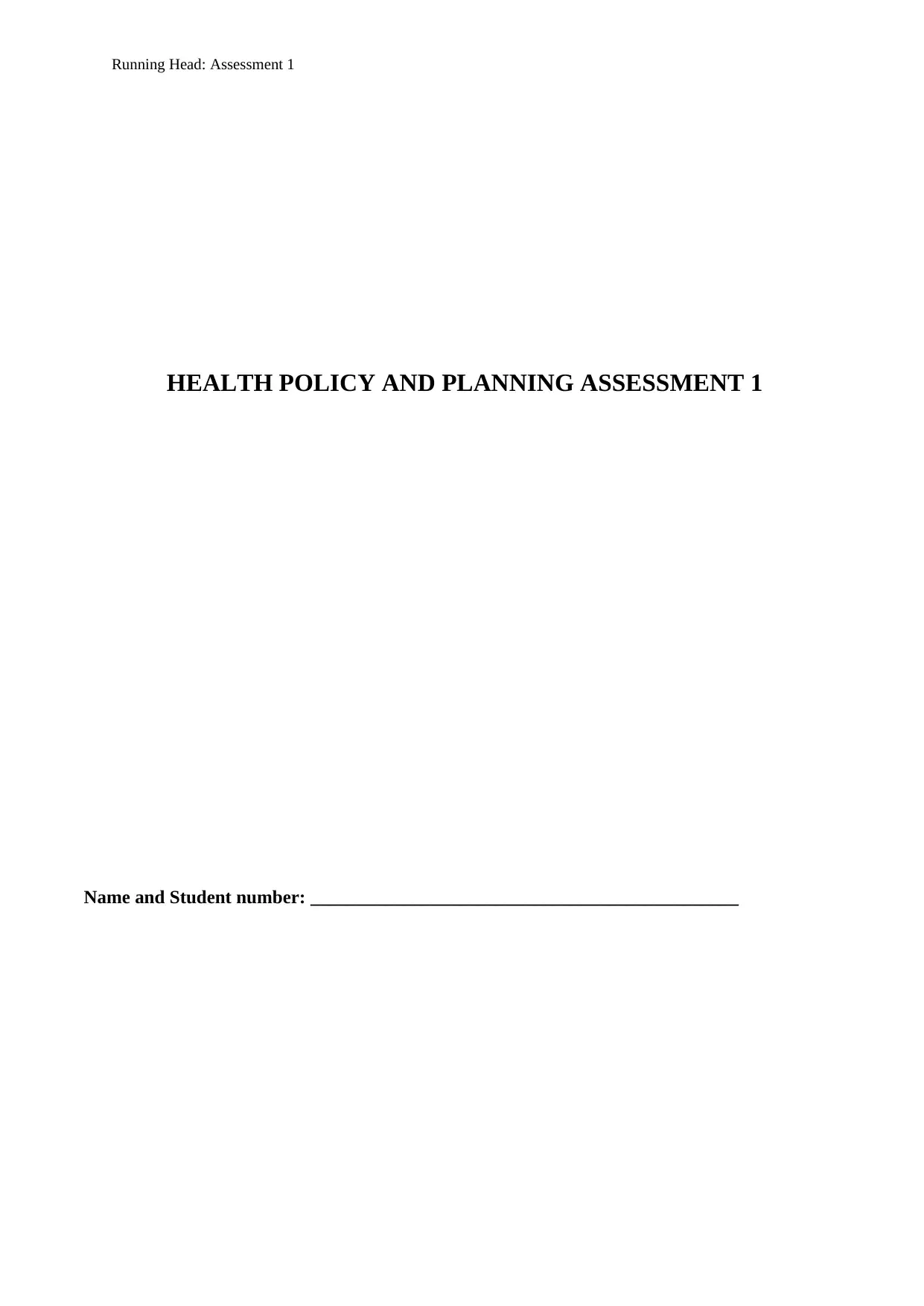
Running Head: Assessment 1
HEALTH POLICY AND PLANNING ASSESSMENT 1
Name and Student number: ______________________________________________
HEALTH POLICY AND PLANNING ASSESSMENT 1
Name and Student number: ______________________________________________
Secure Best Marks with AI Grader
Need help grading? Try our AI Grader for instant feedback on your assignments.
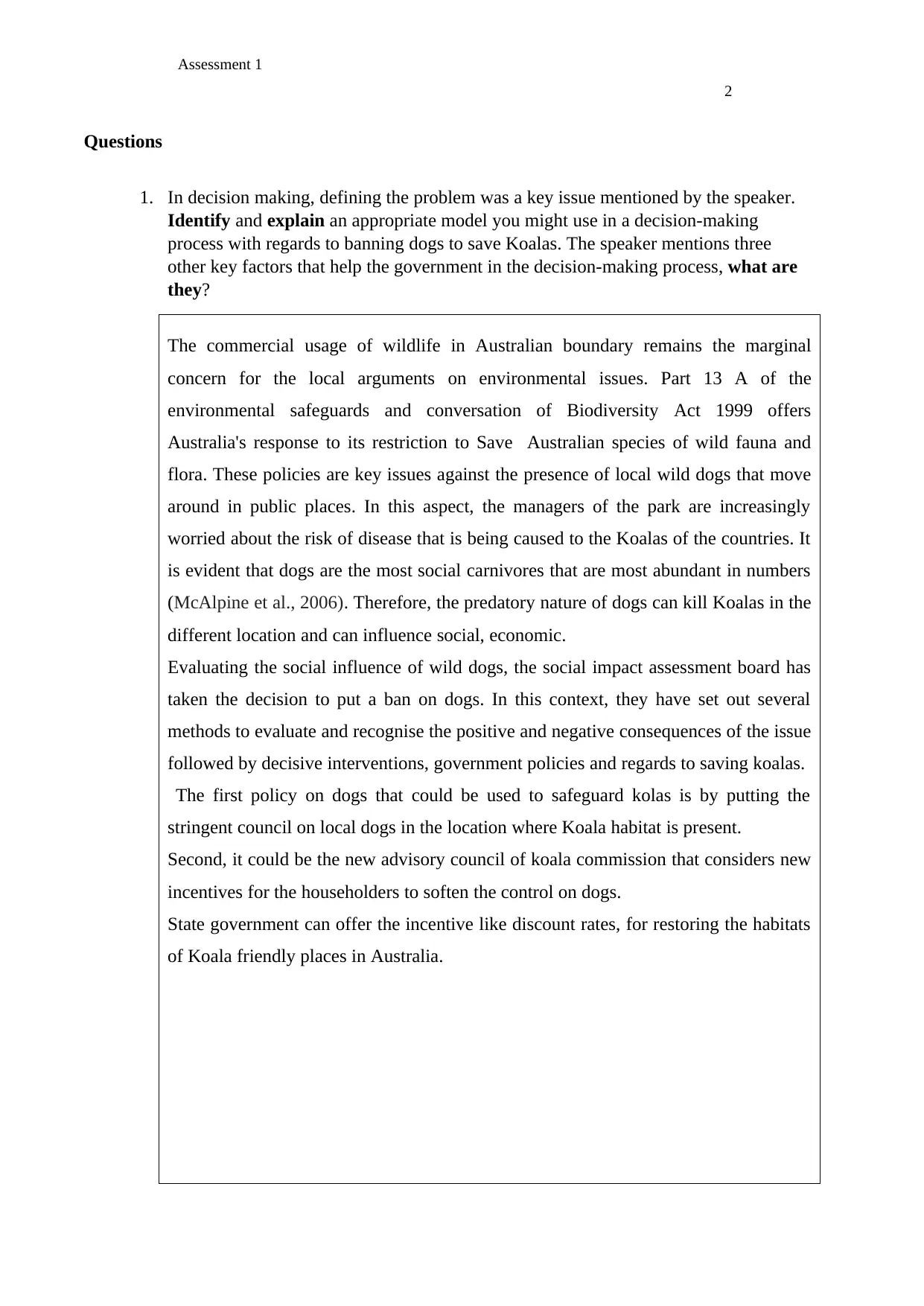
Assessment 1
2
Questions
1. In decision making, defining the problem was a key issue mentioned by the speaker.
Identify and explain an appropriate model you might use in a decision-making
process with regards to banning dogs to save Koalas. The speaker mentions three
other key factors that help the government in the decision-making process, what are
they?
The commercial usage of wildlife in Australian boundary remains the marginal
concern for the local arguments on environmental issues. Part 13 A of the
environmental safeguards and conversation of Biodiversity Act 1999 offers
Australia's response to its restriction to Save Australian species of wild fauna and
flora. These policies are key issues against the presence of local wild dogs that move
around in public places. In this aspect, the managers of the park are increasingly
worried about the risk of disease that is being caused to the Koalas of the countries. It
is evident that dogs are the most social carnivores that are most abundant in numbers
(McAlpine et al., 2006). Therefore, the predatory nature of dogs can kill Koalas in the
different location and can influence social, economic.
Evaluating the social influence of wild dogs, the social impact assessment board has
taken the decision to put a ban on dogs. In this context, they have set out several
methods to evaluate and recognise the positive and negative consequences of the issue
followed by decisive interventions, government policies and regards to saving koalas.
The first policy on dogs that could be used to safeguard kolas is by putting the
stringent council on local dogs in the location where Koala habitat is present.
Second, it could be the new advisory council of koala commission that considers new
incentives for the householders to soften the control on dogs.
State government can offer the incentive like discount rates, for restoring the habitats
of Koala friendly places in Australia.
2
Questions
1. In decision making, defining the problem was a key issue mentioned by the speaker.
Identify and explain an appropriate model you might use in a decision-making
process with regards to banning dogs to save Koalas. The speaker mentions three
other key factors that help the government in the decision-making process, what are
they?
The commercial usage of wildlife in Australian boundary remains the marginal
concern for the local arguments on environmental issues. Part 13 A of the
environmental safeguards and conversation of Biodiversity Act 1999 offers
Australia's response to its restriction to Save Australian species of wild fauna and
flora. These policies are key issues against the presence of local wild dogs that move
around in public places. In this aspect, the managers of the park are increasingly
worried about the risk of disease that is being caused to the Koalas of the countries. It
is evident that dogs are the most social carnivores that are most abundant in numbers
(McAlpine et al., 2006). Therefore, the predatory nature of dogs can kill Koalas in the
different location and can influence social, economic.
Evaluating the social influence of wild dogs, the social impact assessment board has
taken the decision to put a ban on dogs. In this context, they have set out several
methods to evaluate and recognise the positive and negative consequences of the issue
followed by decisive interventions, government policies and regards to saving koalas.
The first policy on dogs that could be used to safeguard kolas is by putting the
stringent council on local dogs in the location where Koala habitat is present.
Second, it could be the new advisory council of koala commission that considers new
incentives for the householders to soften the control on dogs.
State government can offer the incentive like discount rates, for restoring the habitats
of Koala friendly places in Australia.
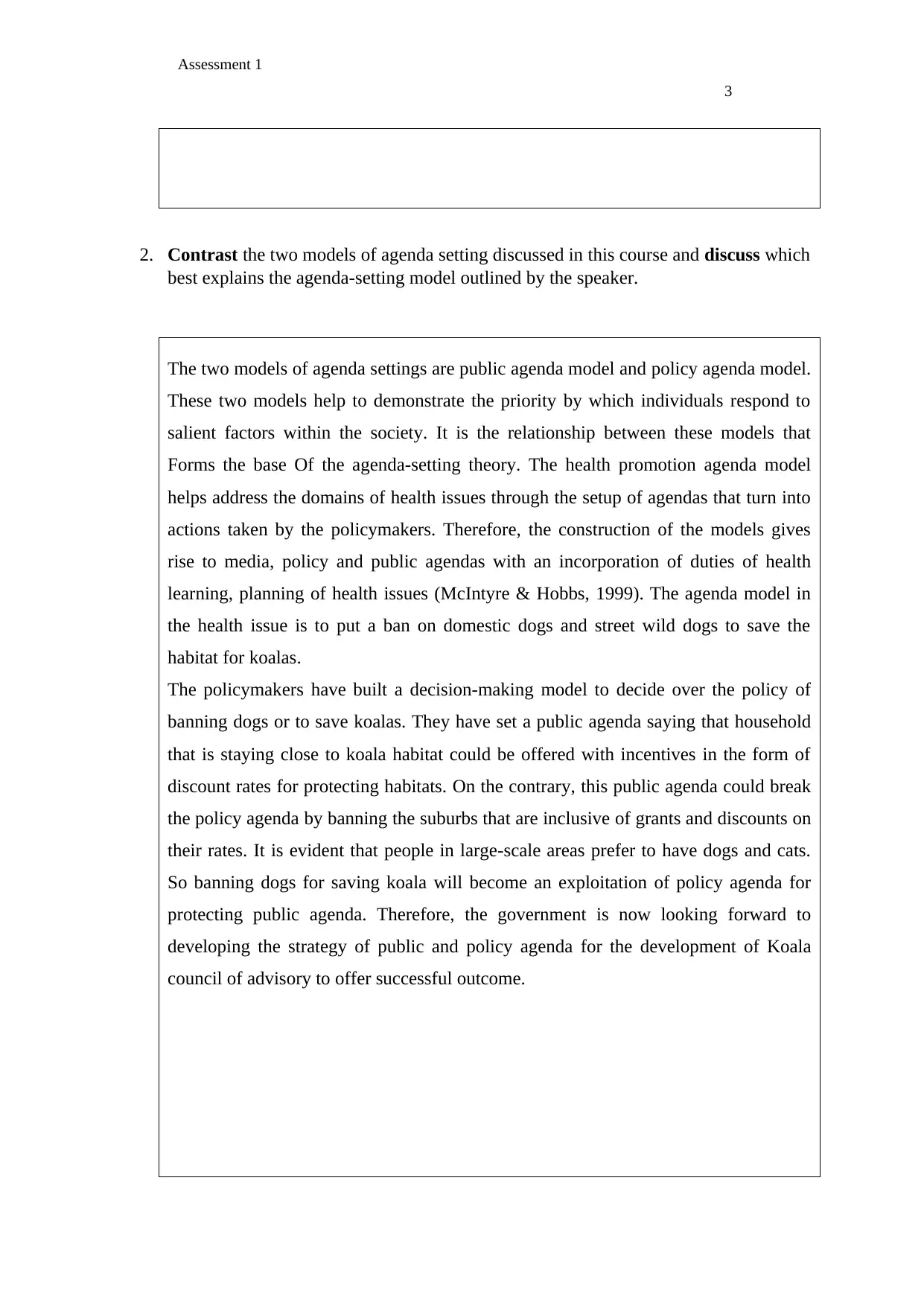
Assessment 1
3
2. Contrast the two models of agenda setting discussed in this course and discuss which
best explains the agenda-setting model outlined by the speaker.
The two models of agenda settings are public agenda model and policy agenda model.
These two models help to demonstrate the priority by which individuals respond to
salient factors within the society. It is the relationship between these models that
Forms the base Of the agenda-setting theory. The health promotion agenda model
helps address the domains of health issues through the setup of agendas that turn into
actions taken by the policymakers. Therefore, the construction of the models gives
rise to media, policy and public agendas with an incorporation of duties of health
learning, planning of health issues (McIntyre & Hobbs, 1999). The agenda model in
the health issue is to put a ban on domestic dogs and street wild dogs to save the
habitat for koalas.
The policymakers have built a decision-making model to decide over the policy of
banning dogs or to save koalas. They have set a public agenda saying that household
that is staying close to koala habitat could be offered with incentives in the form of
discount rates for protecting habitats. On the contrary, this public agenda could break
the policy agenda by banning the suburbs that are inclusive of grants and discounts on
their rates. It is evident that people in large-scale areas prefer to have dogs and cats.
So banning dogs for saving koala will become an exploitation of policy agenda for
protecting public agenda. Therefore, the government is now looking forward to
developing the strategy of public and policy agenda for the development of Koala
council of advisory to offer successful outcome.
3
2. Contrast the two models of agenda setting discussed in this course and discuss which
best explains the agenda-setting model outlined by the speaker.
The two models of agenda settings are public agenda model and policy agenda model.
These two models help to demonstrate the priority by which individuals respond to
salient factors within the society. It is the relationship between these models that
Forms the base Of the agenda-setting theory. The health promotion agenda model
helps address the domains of health issues through the setup of agendas that turn into
actions taken by the policymakers. Therefore, the construction of the models gives
rise to media, policy and public agendas with an incorporation of duties of health
learning, planning of health issues (McIntyre & Hobbs, 1999). The agenda model in
the health issue is to put a ban on domestic dogs and street wild dogs to save the
habitat for koalas.
The policymakers have built a decision-making model to decide over the policy of
banning dogs or to save koalas. They have set a public agenda saying that household
that is staying close to koala habitat could be offered with incentives in the form of
discount rates for protecting habitats. On the contrary, this public agenda could break
the policy agenda by banning the suburbs that are inclusive of grants and discounts on
their rates. It is evident that people in large-scale areas prefer to have dogs and cats.
So banning dogs for saving koala will become an exploitation of policy agenda for
protecting public agenda. Therefore, the government is now looking forward to
developing the strategy of public and policy agenda for the development of Koala
council of advisory to offer successful outcome.
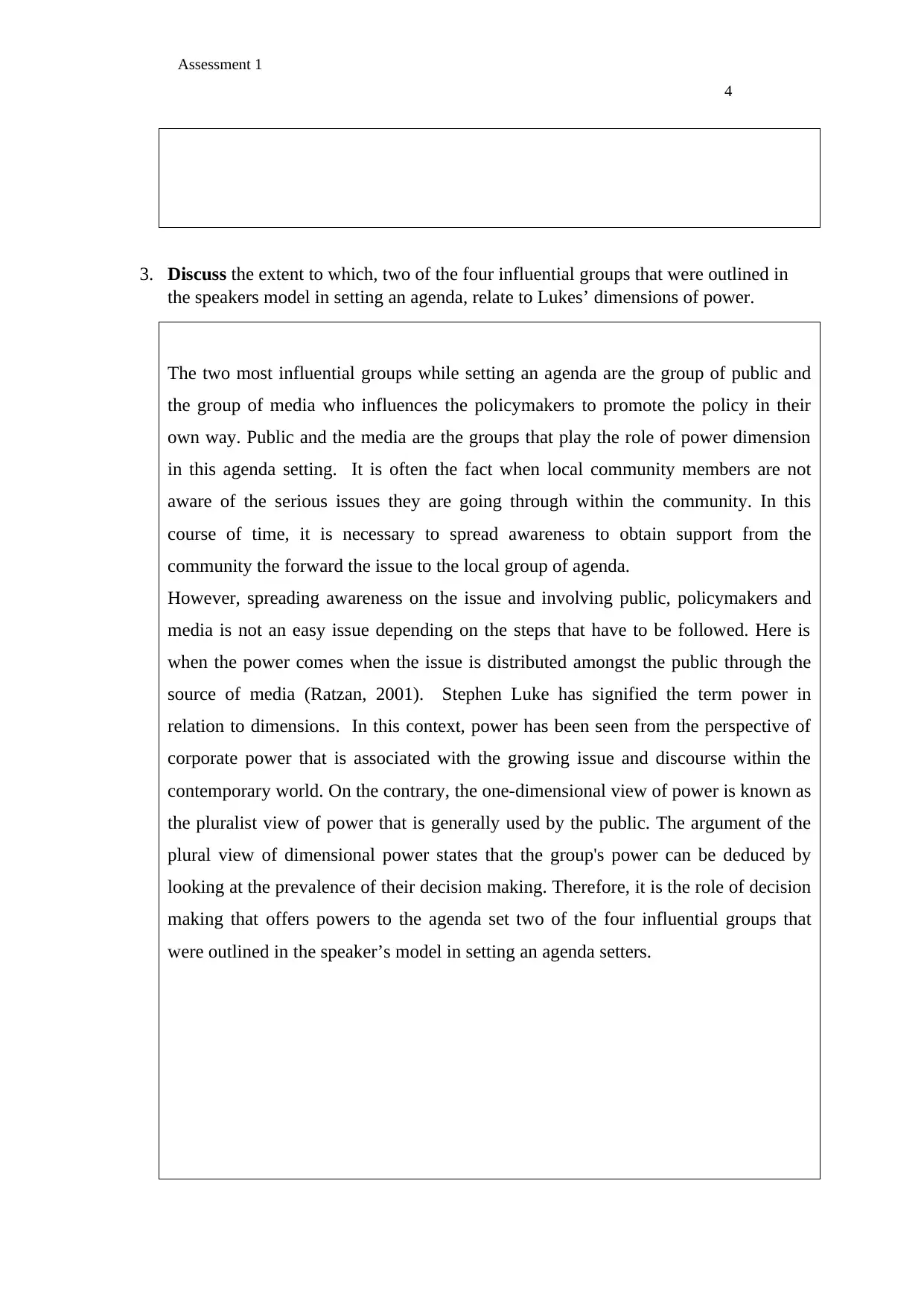
Assessment 1
4
3. Discuss the extent to which, two of the four influential groups that were outlined in
the speakers model in setting an agenda, relate to Lukes’ dimensions of power.
The two most influential groups while setting an agenda are the group of public and
the group of media who influences the policymakers to promote the policy in their
own way. Public and the media are the groups that play the role of power dimension
in this agenda setting. It is often the fact when local community members are not
aware of the serious issues they are going through within the community. In this
course of time, it is necessary to spread awareness to obtain support from the
community the forward the issue to the local group of agenda.
However, spreading awareness on the issue and involving public, policymakers and
media is not an easy issue depending on the steps that have to be followed. Here is
when the power comes when the issue is distributed amongst the public through the
source of media (Ratzan, 2001). Stephen Luke has signified the term power in
relation to dimensions. In this context, power has been seen from the perspective of
corporate power that is associated with the growing issue and discourse within the
contemporary world. On the contrary, the one-dimensional view of power is known as
the pluralist view of power that is generally used by the public. The argument of the
plural view of dimensional power states that the group's power can be deduced by
looking at the prevalence of their decision making. Therefore, it is the role of decision
making that offers powers to the agenda set two of the four influential groups that
were outlined in the speaker’s model in setting an agenda setters.
4
3. Discuss the extent to which, two of the four influential groups that were outlined in
the speakers model in setting an agenda, relate to Lukes’ dimensions of power.
The two most influential groups while setting an agenda are the group of public and
the group of media who influences the policymakers to promote the policy in their
own way. Public and the media are the groups that play the role of power dimension
in this agenda setting. It is often the fact when local community members are not
aware of the serious issues they are going through within the community. In this
course of time, it is necessary to spread awareness to obtain support from the
community the forward the issue to the local group of agenda.
However, spreading awareness on the issue and involving public, policymakers and
media is not an easy issue depending on the steps that have to be followed. Here is
when the power comes when the issue is distributed amongst the public through the
source of media (Ratzan, 2001). Stephen Luke has signified the term power in
relation to dimensions. In this context, power has been seen from the perspective of
corporate power that is associated with the growing issue and discourse within the
contemporary world. On the contrary, the one-dimensional view of power is known as
the pluralist view of power that is generally used by the public. The argument of the
plural view of dimensional power states that the group's power can be deduced by
looking at the prevalence of their decision making. Therefore, it is the role of decision
making that offers powers to the agenda set two of the four influential groups that
were outlined in the speaker’s model in setting an agenda setters.
Secure Best Marks with AI Grader
Need help grading? Try our AI Grader for instant feedback on your assignments.
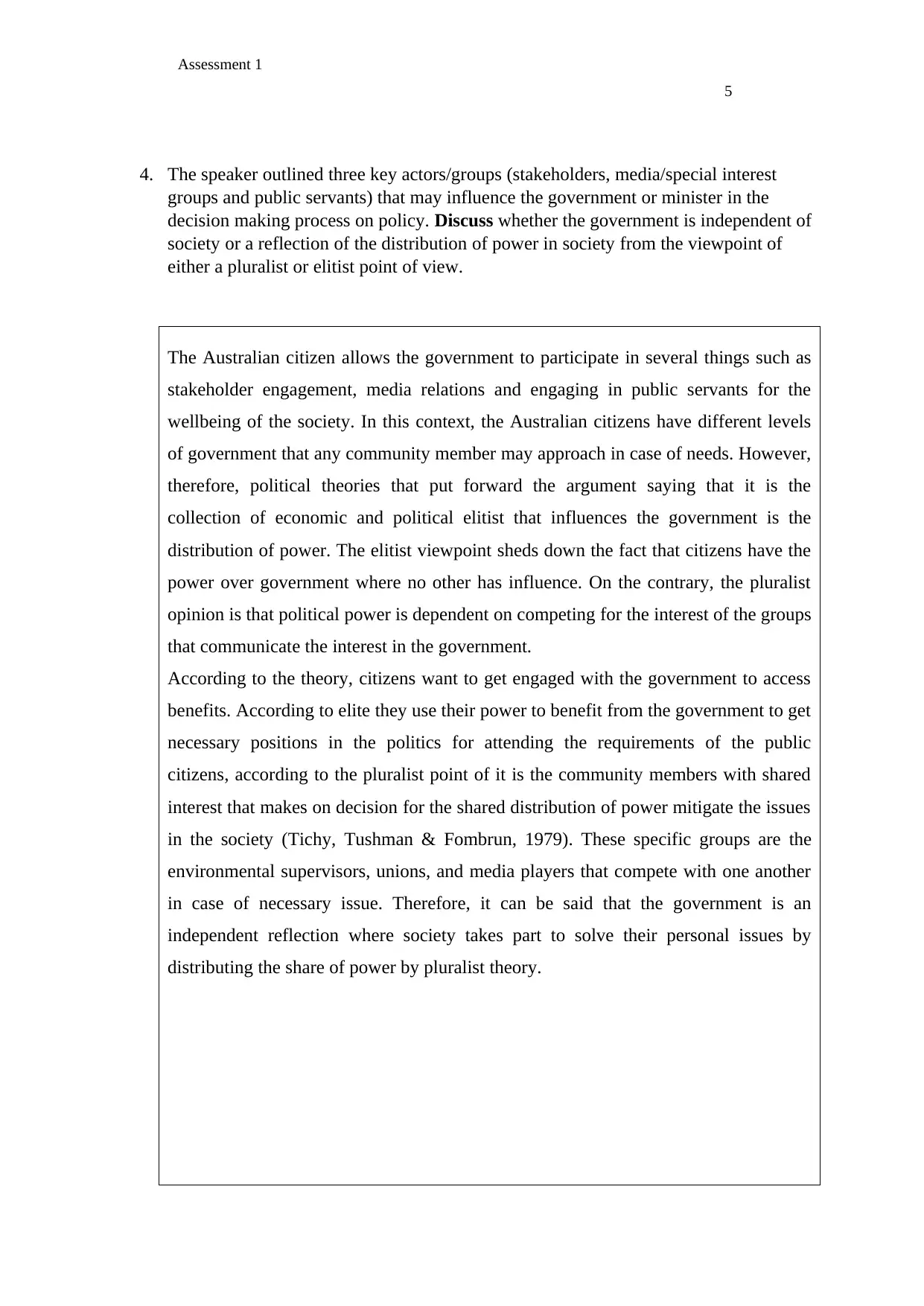
Assessment 1
5
4. The speaker outlined three key actors/groups (stakeholders, media/special interest
groups and public servants) that may influence the government or minister in the
decision making process on policy. Discuss whether the government is independent of
society or a reflection of the distribution of power in society from the viewpoint of
either a pluralist or elitist point of view.
The Australian citizen allows the government to participate in several things such as
stakeholder engagement, media relations and engaging in public servants for the
wellbeing of the society. In this context, the Australian citizens have different levels
of government that any community member may approach in case of needs. However,
therefore, political theories that put forward the argument saying that it is the
collection of economic and political elitist that influences the government is the
distribution of power. The elitist viewpoint sheds down the fact that citizens have the
power over government where no other has influence. On the contrary, the pluralist
opinion is that political power is dependent on competing for the interest of the groups
that communicate the interest in the government.
According to the theory, citizens want to get engaged with the government to access
benefits. According to elite they use their power to benefit from the government to get
necessary positions in the politics for attending the requirements of the public
citizens, according to the pluralist point of it is the community members with shared
interest that makes on decision for the shared distribution of power mitigate the issues
in the society (Tichy, Tushman & Fombrun, 1979). These specific groups are the
environmental supervisors, unions, and media players that compete with one another
in case of necessary issue. Therefore, it can be said that the government is an
independent reflection where society takes part to solve their personal issues by
distributing the share of power by pluralist theory.
5
4. The speaker outlined three key actors/groups (stakeholders, media/special interest
groups and public servants) that may influence the government or minister in the
decision making process on policy. Discuss whether the government is independent of
society or a reflection of the distribution of power in society from the viewpoint of
either a pluralist or elitist point of view.
The Australian citizen allows the government to participate in several things such as
stakeholder engagement, media relations and engaging in public servants for the
wellbeing of the society. In this context, the Australian citizens have different levels
of government that any community member may approach in case of needs. However,
therefore, political theories that put forward the argument saying that it is the
collection of economic and political elitist that influences the government is the
distribution of power. The elitist viewpoint sheds down the fact that citizens have the
power over government where no other has influence. On the contrary, the pluralist
opinion is that political power is dependent on competing for the interest of the groups
that communicate the interest in the government.
According to the theory, citizens want to get engaged with the government to access
benefits. According to elite they use their power to benefit from the government to get
necessary positions in the politics for attending the requirements of the public
citizens, according to the pluralist point of it is the community members with shared
interest that makes on decision for the shared distribution of power mitigate the issues
in the society (Tichy, Tushman & Fombrun, 1979). These specific groups are the
environmental supervisors, unions, and media players that compete with one another
in case of necessary issue. Therefore, it can be said that the government is an
independent reflection where society takes part to solve their personal issues by
distributing the share of power by pluralist theory.
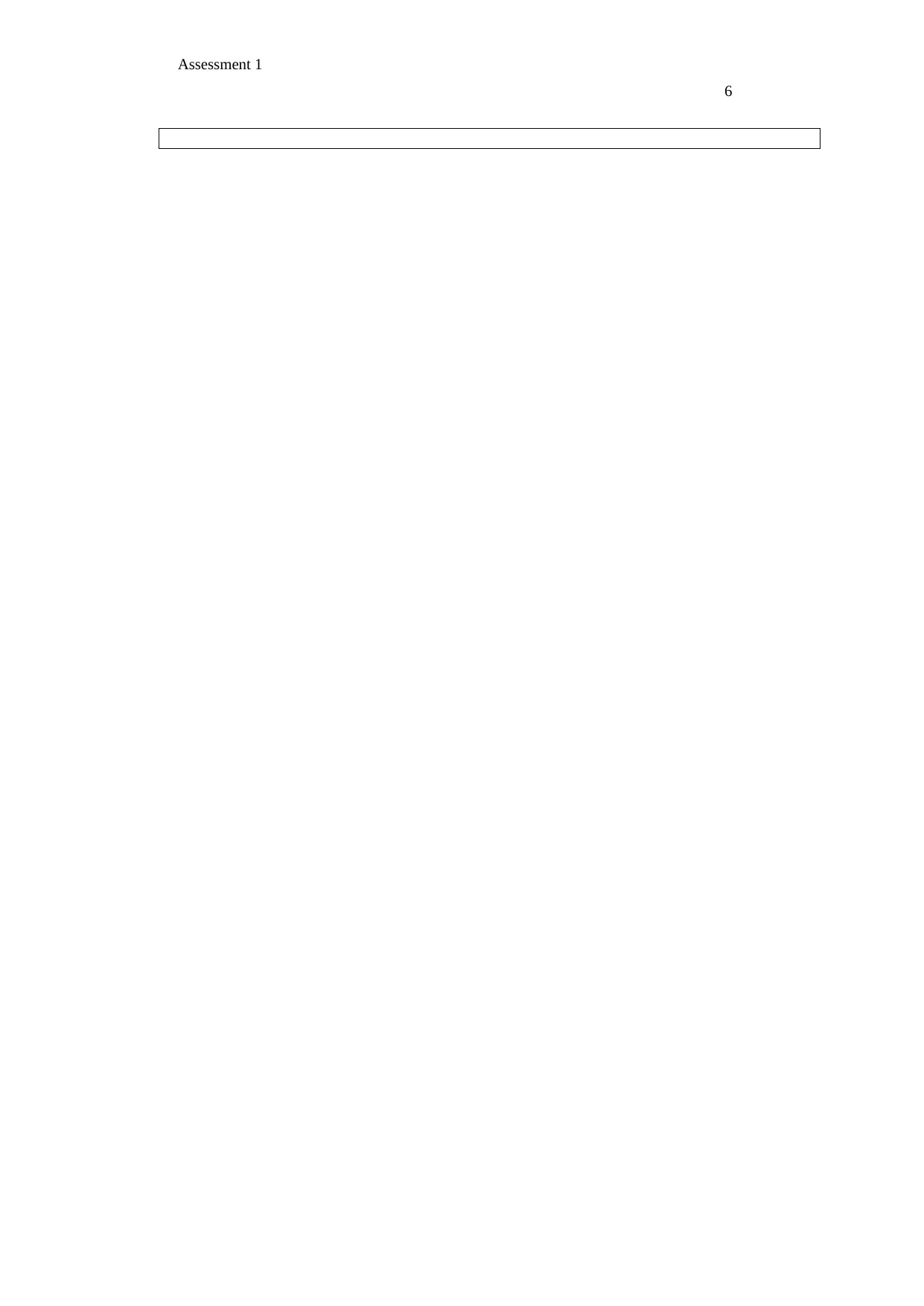
Assessment 1
6
6
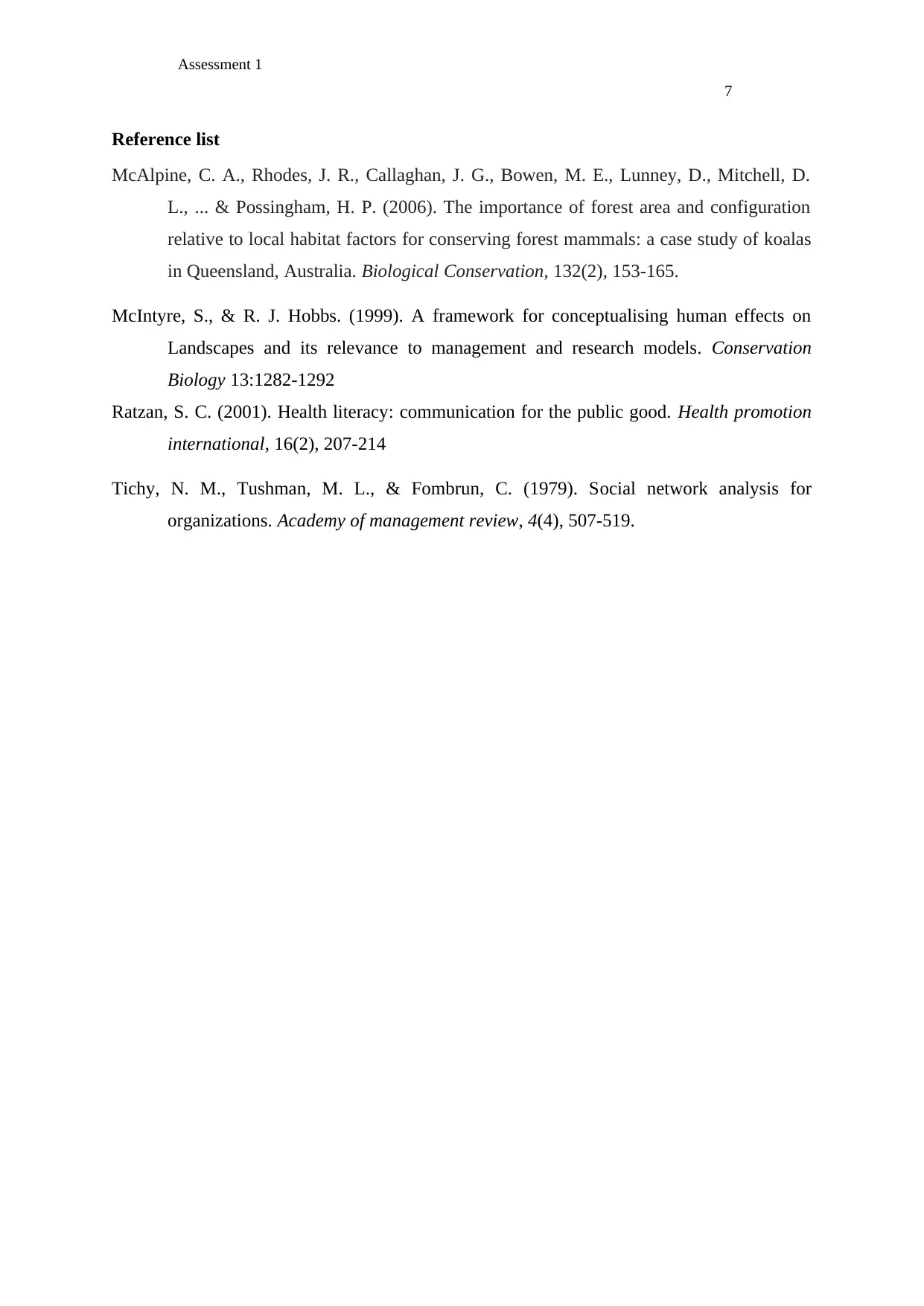
Assessment 1
7
Reference list
McAlpine, C. A., Rhodes, J. R., Callaghan, J. G., Bowen, M. E., Lunney, D., Mitchell, D.
L., ... & Possingham, H. P. (2006). The importance of forest area and configuration
relative to local habitat factors for conserving forest mammals: a case study of koalas
in Queensland, Australia. Biological Conservation, 132(2), 153-165.
McIntyre, S., & R. J. Hobbs. (1999). A framework for conceptualising human effects on
Landscapes and its relevance to management and research models. Conservation
Biology 13:1282-1292
Ratzan, S. C. (2001). Health literacy: communication for the public good. Health promotion
international, 16(2), 207-214
Tichy, N. M., Tushman, M. L., & Fombrun, C. (1979). Social network analysis for
organizations. Academy of management review, 4(4), 507-519.
7
Reference list
McAlpine, C. A., Rhodes, J. R., Callaghan, J. G., Bowen, M. E., Lunney, D., Mitchell, D.
L., ... & Possingham, H. P. (2006). The importance of forest area and configuration
relative to local habitat factors for conserving forest mammals: a case study of koalas
in Queensland, Australia. Biological Conservation, 132(2), 153-165.
McIntyre, S., & R. J. Hobbs. (1999). A framework for conceptualising human effects on
Landscapes and its relevance to management and research models. Conservation
Biology 13:1282-1292
Ratzan, S. C. (2001). Health literacy: communication for the public good. Health promotion
international, 16(2), 207-214
Tichy, N. M., Tushman, M. L., & Fombrun, C. (1979). Social network analysis for
organizations. Academy of management review, 4(4), 507-519.
1 out of 7
Your All-in-One AI-Powered Toolkit for Academic Success.
+13062052269
info@desklib.com
Available 24*7 on WhatsApp / Email
![[object Object]](/_next/static/media/star-bottom.7253800d.svg)
Unlock your academic potential
© 2024 | Zucol Services PVT LTD | All rights reserved.




